Who: Cécile, Angélo, Lenny
Where: Tuamotus, French Polynesia
Boat: Lagoon 400
Blog: Temptationautourdumonde.blogspot.com
In the early evening, we took our position in front of our first pass in the Tuamotus: Raroia. We had to keep tacking all night to maintain stability. Hardly had we arrived than we set out in the dinghy to go diving in the pass. We were astounded by all of these new species. Then we went to the village to check up on the weather and discovered that we were going to experience our first Mara’amu. The Mara'amus are week long episodes of violent southerly winds which blow between 35 and 60 knots with a 4 to 6-meter (13-20’) swell. They are frequent in Polynesia in July and August. The atolls which are fairly low-lying don’t offer much in the way of shelter, so we head to the other side of the lagoon to take refuge behind the largest motu (little coconut palm covered islet) and hopefully avoid the worst of the swell. When the good weather was back, we stayed a few more days to enjoy this heavenly place. Sailing inside the atoll is fairly easy but only when the sun is at its zenith or behind you, as the lagoon is full of clumps of coral. We crossed the lagoon to investigate the motu where the Kon Tiki was grounded. Then we left to head to one of the Tuamotus’ most famous atolls: Fakarava and its southern passage. After several days spent here, we sailed the thirty miles across the lagoon, hugging the coastline. We didn’t hesitate to stop and anchor when we found a spot that suited us, before stopping at a village to the north where we could stock up on provisions. The boat which delivers fresh produce only came by once per week, and it had been over a month (since the Marquesas Islands) that we hadn’t seen a tomato or an egg. Later we fell in love with Tahanea, an almost uninhabited and wild atoll. The seabed is full of life, and the coral is magnificent. Lenny worked on his snorkeling and went down as far as 9 meters (30’) which allowed him to get a closer look at the marine life.
 Vote for your favorite multihulls!
Vote for your favorite multihulls! 

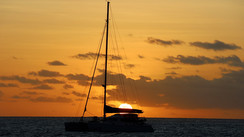

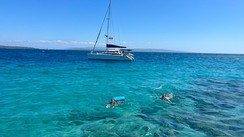
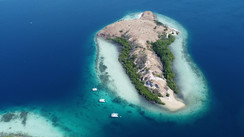
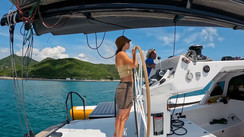
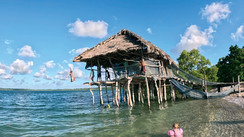
What readers think
Post a comment
No comments to show.